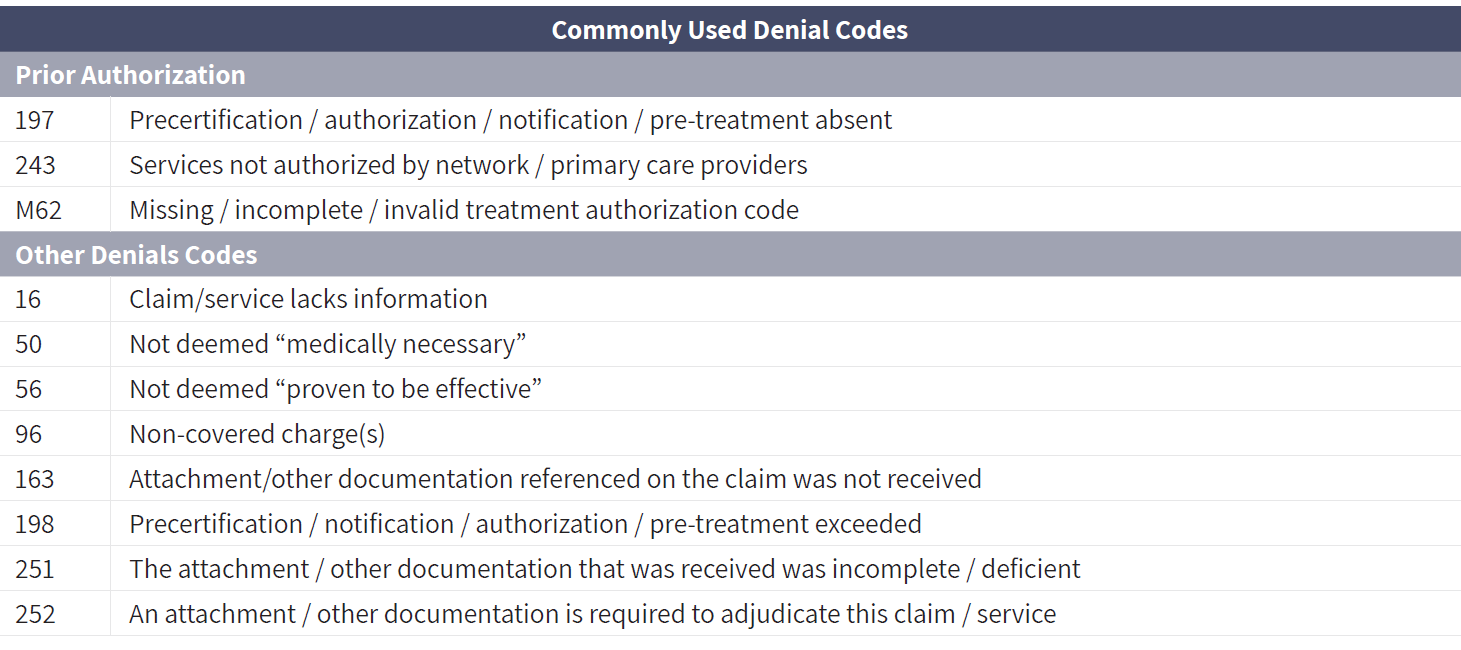Integrating Laboratory and Clinical Data: A Framework for Improving Reimbursement of Genomic Testing
Sep 6, 2019
Introduction
In 2017, there were roughly 75,000 genetic tests on the market with about ten new tests added daily.1 The rapid expansion of genomic testing, particularly next-generation sequencing (NGS) panels, has led to uncertainty about their appropriate use, interpretation, and clinical utility. Indefinite clinical utility leads to claims denials which are appealed through a lengthy and often costly process that does not guarantee reimbursement. Thus, the financial responsibility of non-reimbursed genomic testing is either absorbed by the testing laboratory or transferred to the patient. Health informatics systems that curate diagnostic, clinical, and financial data can help to streamline the appeals process by providing access to critical clinical information needed to establish medical necessity upon appeal. Additionally, this data can be transformed into real-world evidence (RWE) used to establish coverage for the long run.
Genetic testing voluntarily submitted to the GTR®.2 The graph represents the number of individual tests, genes, and conditions submitted from 2012-2019.

Methods
Billing records from 100 independent laboratories were reviewed to determine the proportion of molecular and NGS tests (based on CPT coding) that were denied on initial submission in 2018. Clinical notes were provided for a portion of the denied claims. Success rate, time-to-adjudication, and additional cost were evaluated for the portion of the claims where clinical documentation was provided.
Commonly Used Denial Codes for NGS Panel Claims Data for 2018.

Results
Approximately 80% of NGS and 40% of molecular services were initially denied for various reasons, including medical necessity and prior authorization. After providing clinical documentation upon appeal for qualified claims, approximately 55% of denials were successfully overturned. The average appeal process was completed in 60-120 days. The costs incurred to labs and payors were tens to hundreds, and tens to thousands of dollars, respectively.
Specific NGS Panel Claims Data for 2018.

Appeal Process – *Content and process is dependent on the individual payor and policy type.

Conclusions
Denials and appeals due to the lack of clinical utility are costly and time consuming for labs and payors. Denials can be successfully adjudicated by submitting clinical information. However, access to this information is not typically available to laboratories billing for diagnostic services. Health informatics systems that integrate diagnostic, clinical, and financial data can streamline the claims adjudication process by automating the extraction of key clinical data including CPT and ICD10 codes, clinical notes, and treatment plans. In addition to its use in appeals, integrated data can be used to simplify the reimbursement process and improve lab revenues. Integrated data that includes clinical outcomes is transformed into real-world evidence (RWE) that supports clinical utility used to establish payor coverage. Additionally, this highly structured data can be used for quality reporting as well as enabling labs to enter into payor risk-sharing programs and other physician certification programs that can minimize the claims and appeals cycle by building trusted partnerships between diagnostic providers and payors. In summary, curated data that integrates diagnostic, clinical, and financial information has the potential to bring tremendous value to laboratories when the uncertainty of clinical utility is present.
Interested in learning more on the topic of next-generation sequencing? Watch the on-demand webinar, "Pathway to Success with Next Generation Sequencing – Reimbursement Insight and IT Strategies," here:
Sources:
1. KA Phillips, et.al., Health Affairs, 2018 May.
2. Genetic Test Registry (GTR) https://www.ncbi.nlm.nih.gov/gtr/
Published by XIFIN
